Search Images
Browse Content (p. 608)
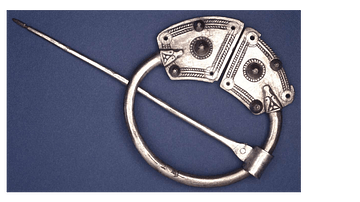
Image
Viking-Celtic Penannular Brooch
Silver bossed penannular brooch, found in Waterford, England. 9th-10th Century CE.
Hoop with trapezoidal terminals, animal heads at join between hoop and terminal. Diameter: 10.5 cm (4.1 in). (Courtesy of the British Museum)
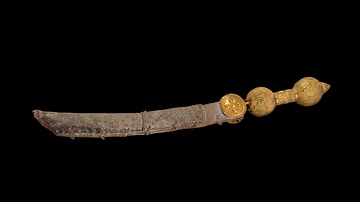
Image
Akrafena with Shark-Skin Scabbard
An Akfrefena, a type of Ashanti state sword, with a sharkskin and antelope hide scabbard. Steel blade, with wooden handle, decorated with gold leaf. Ghana. 19th Century CE. 70 cm (27.4 in) x 7.5 cm (2.9 in). (Courtesy of the British Museum)
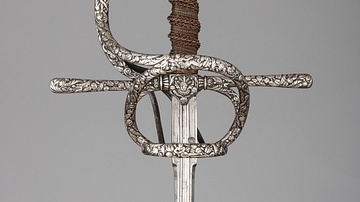
Image
German Rapier
A rapier made by German swordmaker Meves Berns c. 1610-1620 CE. Steel blade, hilt decorated with silver and copper wire. Solingen, Germany. 120.2 cm (47 5/16 in). (Courtesy of the Metropolitan Museum of Art)
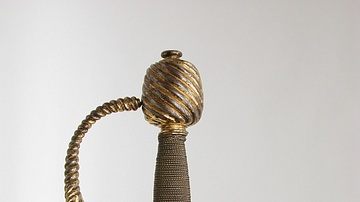
Image
Spanish Rapier
A rapier signed by the Spanish swordmaker Juan Martinez in 1580 CE. The handle is decorated with gold, copper wire, wood, and velvet. Toledo, Spain. (Courtesy of the Metropolitan Museum of Art)
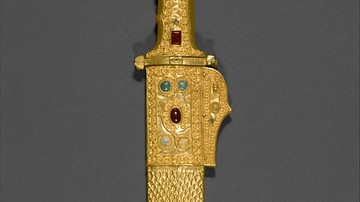
Image
Sasanian Sword
This richly decorated Sasanian sword and scabbard was produced in 7th Century CE. The Sasanians adopted this style of sword from the Huns, a nomadic people who came into conflict with the Sasanian Empire in the 5th Century CE. Iron blade...
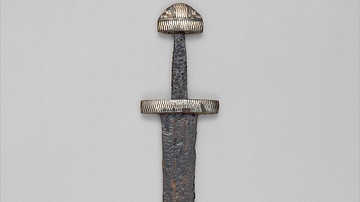
Image
Viking Pattern-Welded Sword
A 10th Century CE steel sword, likely made in Scandinavia. The high quality of the pattern-welded steel blade, and beautiful decoration on the hilt, indicates that it was owned by a high status warrior. Steel blade, decorated with copper...
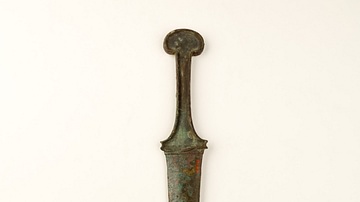
Image
Egyptian Bronze Sword
A straight bronze sword from the Egyptian New Kingdom. Length: 52 cm (20 1.2 in). Thebes, Egypt. 18th Dynasty, 1550–1458 BCE. (Courtesy of the Metropolitan Museum of Art)
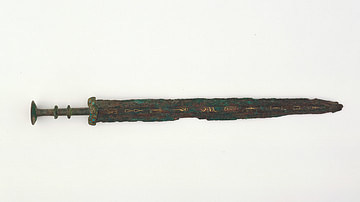
Image
Eastern Zhou Sword
A bronze, double-edged straight sword from the Eastern Zhou Dynasty. Decorated with turqoise and gold. Warring States Period, c. early 5th century BCE. China. (Courtesy of the Smithsonian Institute)
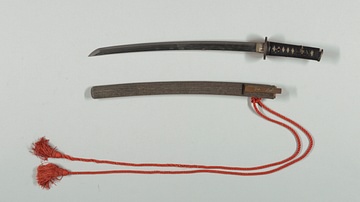
Image
Japanese Katana & Scabbard
Japanese steel katana and scabbard. Decorated with cord, iron, silver, gold, and shibuichi alloy. c. 1596–1615 CE. Yamato, Japan. (Cooper Hewitt, Smithsonian Design Museum)
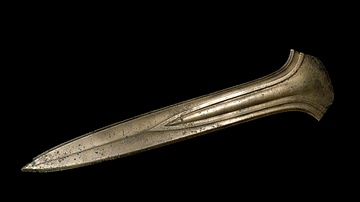
Image
Oxborough Dirk
The "Oxborough dirk" is a giant, ceremonial dirk found near Oxborough in Norfolk, England. It is one of only six giant dirks found across Europe. The oversized copper alloy sword measures 70.9 centimetres (27.9 in) in length, weighing 2.37...